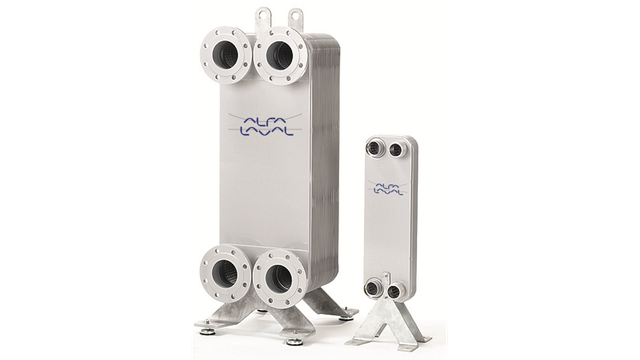AlfaNovaM
Manufactured with Alfa Laval’s patented AlfaFusion technology, the AlfaNovaM line of marine heat exchangers are a fusion-bonded thermal transfer solution made from 100% stainless steel. This unique design means that AlfaNovaM is an ideal solution for Ammonia duties both in reliquefaction systems as well as in fuel gas systems.
100% stainless steel
- Marine classification for use in a range of LPG/LNG duties, due to wide temperature range and copper-free construction
- 100% stainless steel 316 makes AlfaNovaM suitable even for ammonia duties
- Compact and efficient plate type heat exchanger
- Flexible temperature range from -196°C to 550°C
- Range includes: AlfaNovaM HP 76 and AlfaNovaM HP 400
Alfa Laval’s fusion-bonded fully stainless steel heat exchangers offer a reliable and robust heat transfer solution for duties where metals like copper must be avoided. They can support applications with design pressures up to 40 bar with a temperature range from cryogenic to 550°C. For marine duties, they provide a smart solution for handling ammonia or other aggressive media. Suitable applications for AlfaNovaM are heat recovery duties, gas cooling, condensing, sub-cooling, gas heating and more.
How it works
Two media at different temperatures flow on either side of thin corrugated stainless steel plates that are stacked on top of each other. The two media flow in a countercurrent flow through alternate channels and are held within the plate pack by a fusion-bonded seal around the edge of the plates. The points at which the plates are in contact with each other are also bonded with the same technology, reinforcing the pack against the pressure of the media inside.
The countercurrent flow makes it possible to extract heat efficiently even when there are only extremely small differences between the temperatures of the hot and cold media. This results in notable energy cost savings. In some systems, co-current flows re also possible.
View the animation to learn more.


